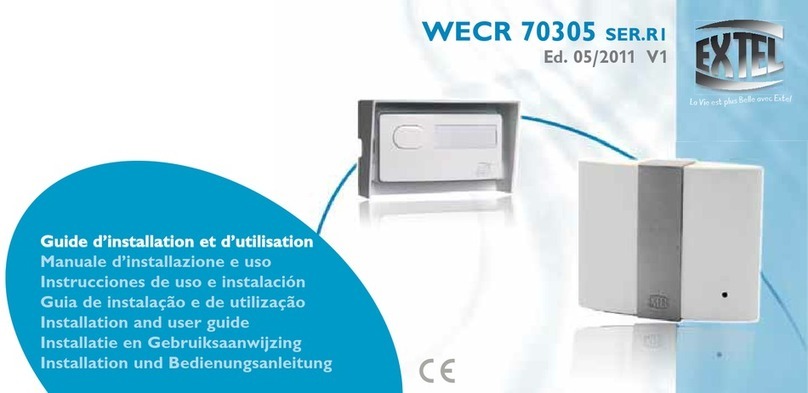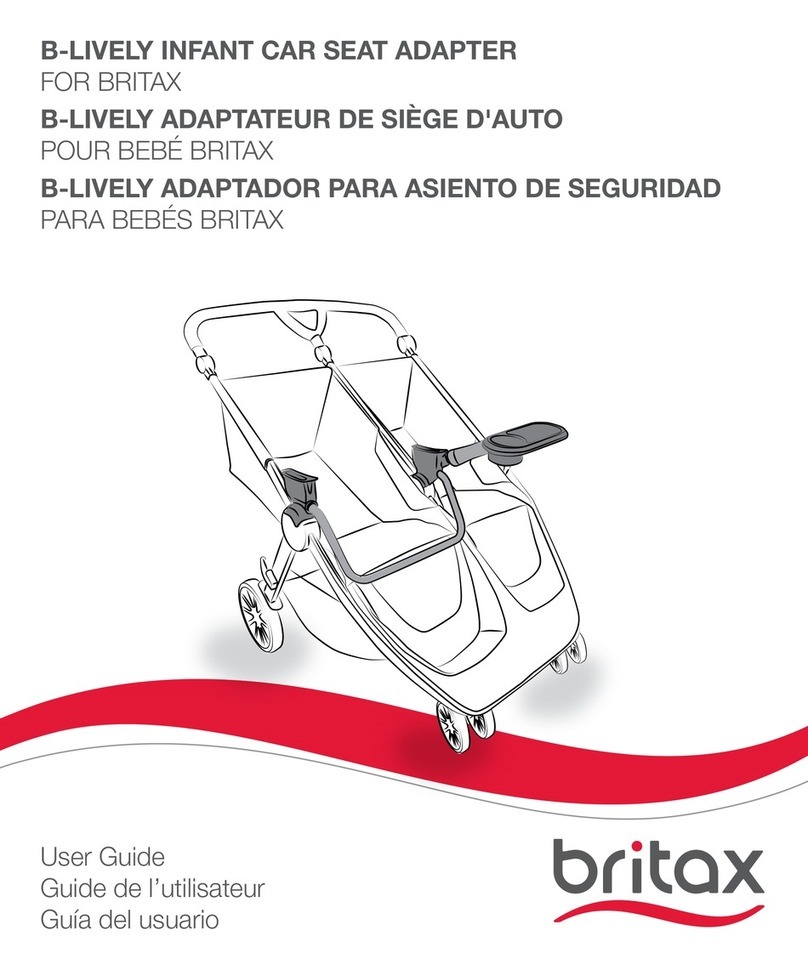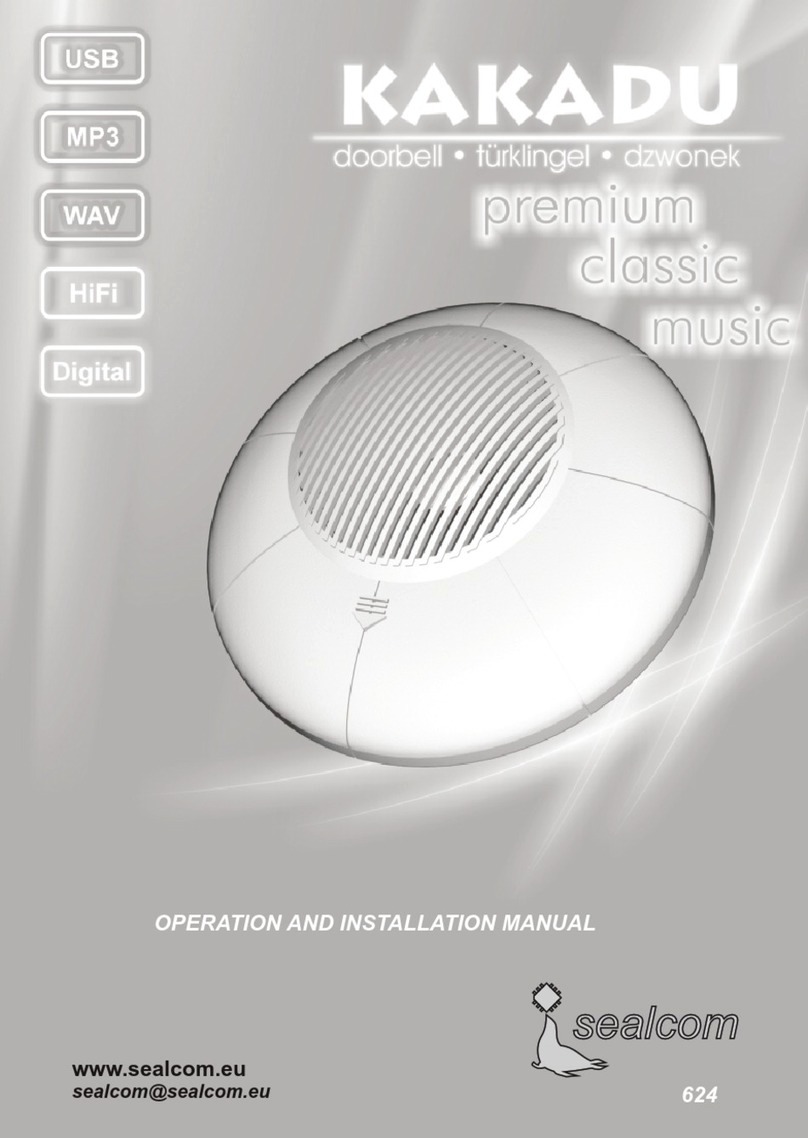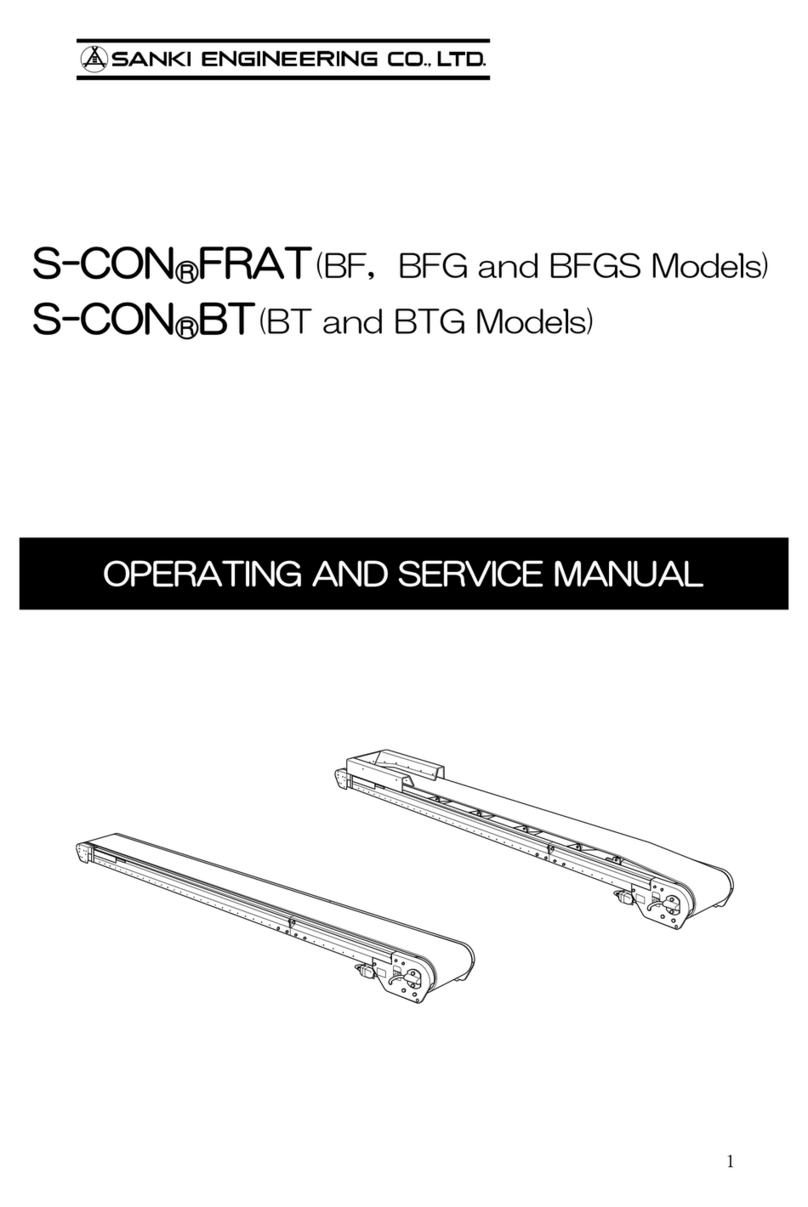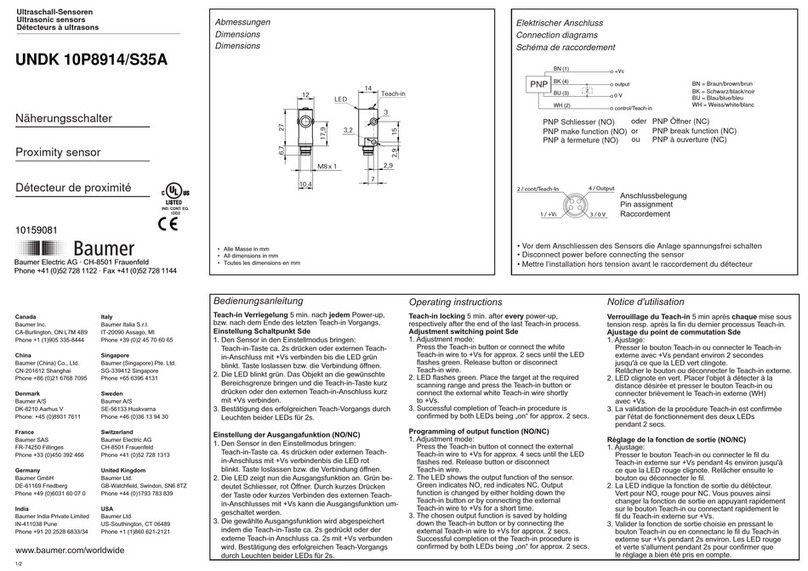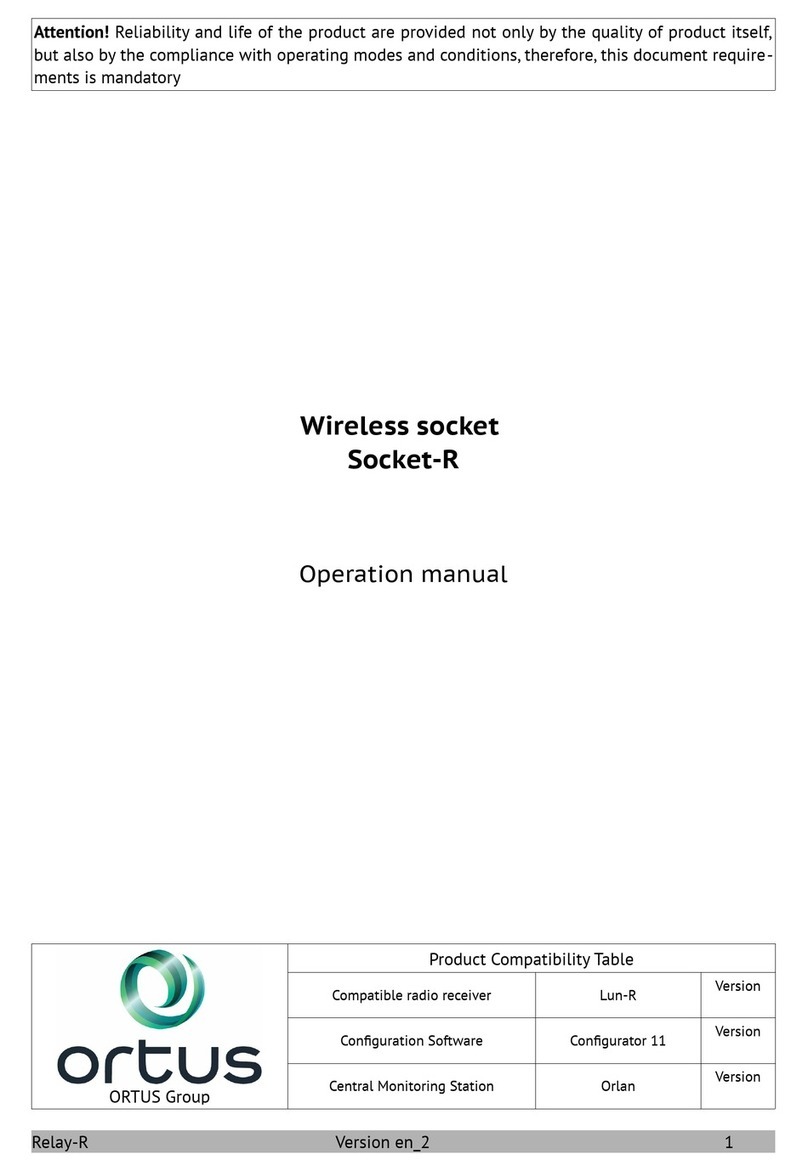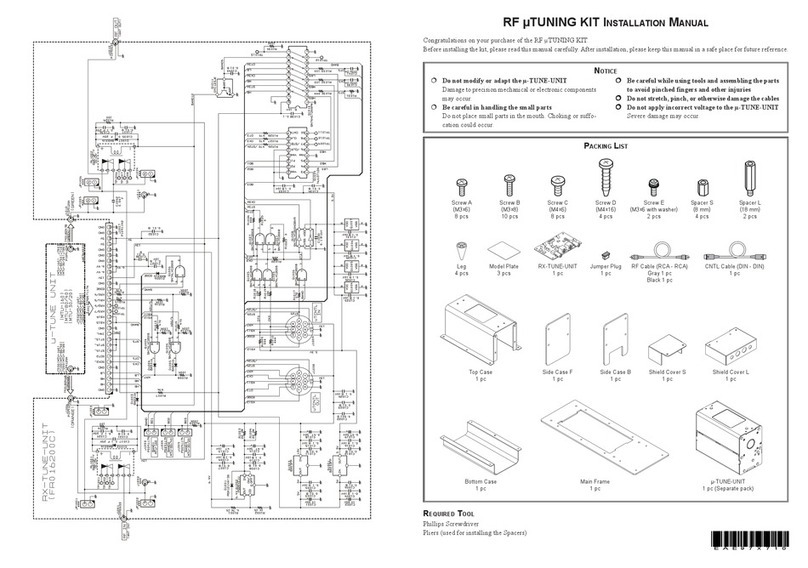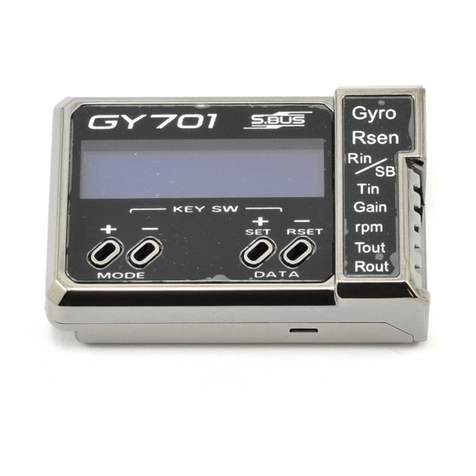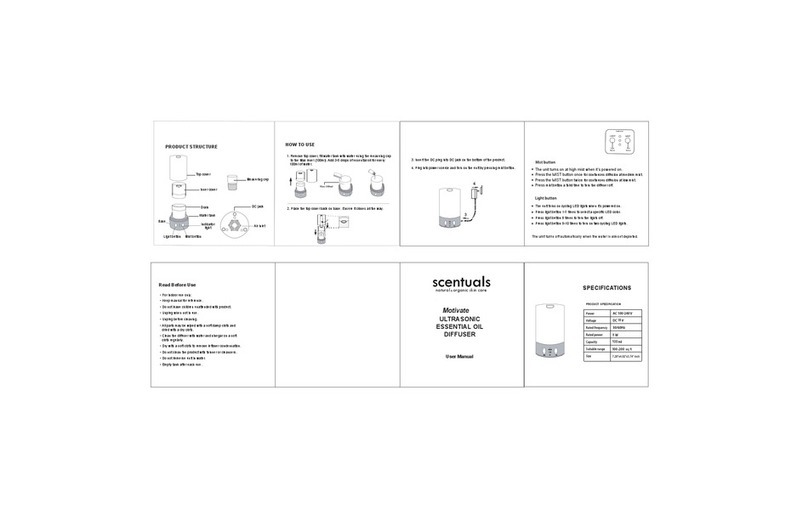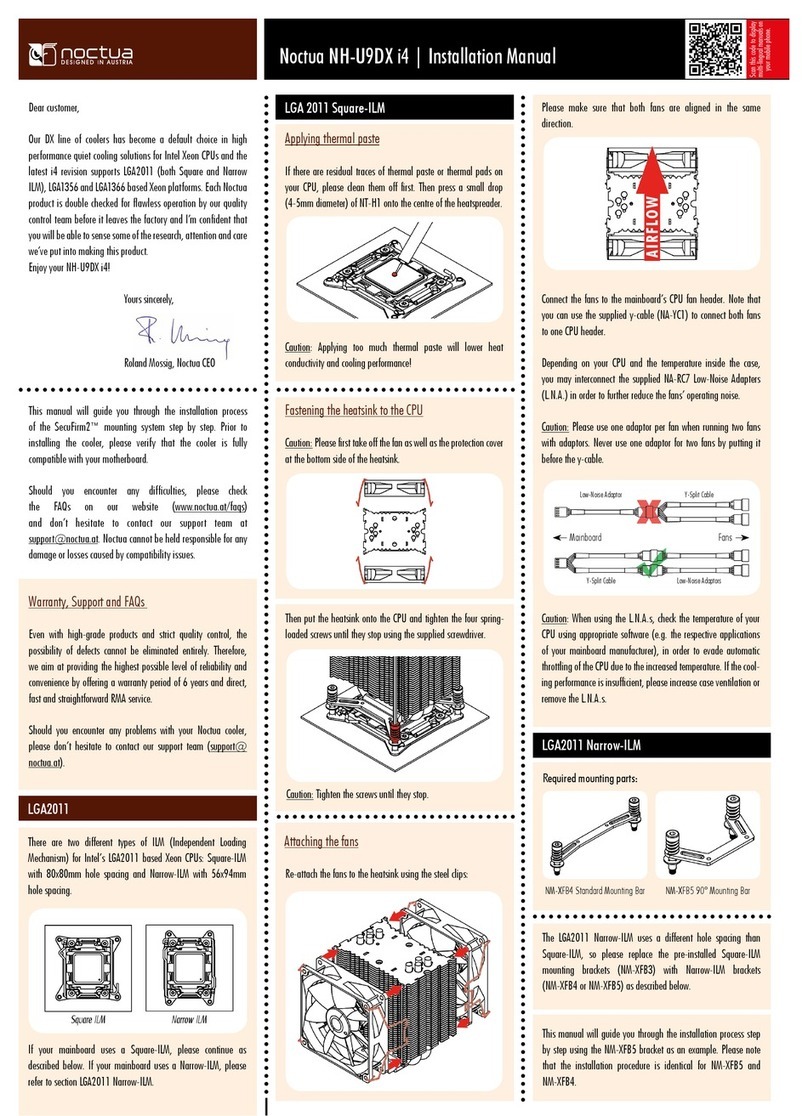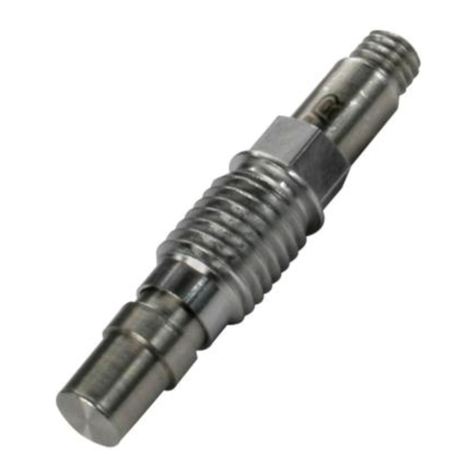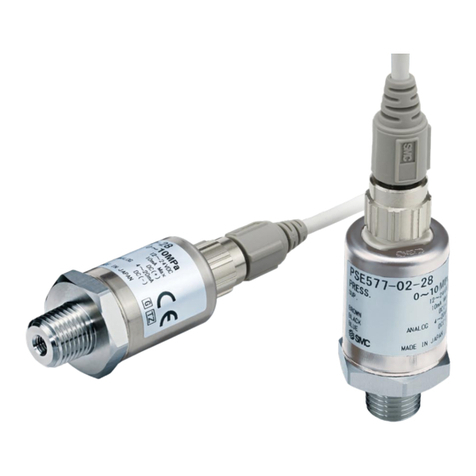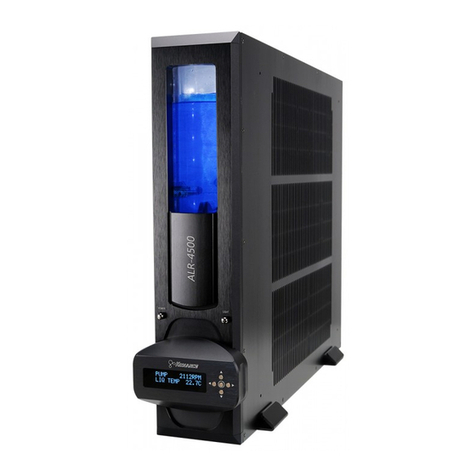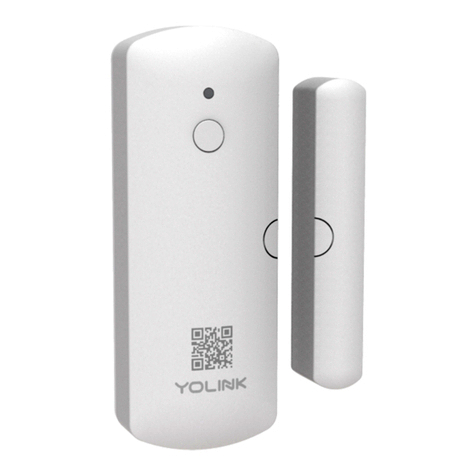FireBird TD 400 User manual

Doc.-No.: 01/EHTD400 Equipment Handbook
Date: 01.03.2003 TD400
Revision:
Rev. date:
Page: 1 of 40
FIREBIRD, Am Tower 16, 54634 Bitburg
Equipment Handbook for
Parachute Tandem-System
TD 400
written by / date: proved by / date:
Signature: Signature:
Manufacturer: FIREBIRD
Am Tower 16, 54634 Bitburg
Telefon +496561 / 949680, Fax +496561 / 949681
Internet-Adresse: www.flyfirebird.com
JTSO-Authorisation No.: LBA.O.040.014/04 JTSO
Serial Number:
Mfd:

Doc.-No.: 01/EHTD400 Equipment Handbook
Date: 01.03.2003 TD400
Revision:
Rev. date:
Page: 2 of 40
FIREBIRD, Am Tower 16, 54634 Bitburg
Register of valid Pages/Capter:
Number: Titel: Released: Edition:
Page 01 Main 01.03.2003 First Issue
Page 02 Register of valid Pages/Capter 01.03.2003 First Issue
Page 03 Table of Contents 01.03.2003 First Issue
Page 04 Foreword 25.10.06 Rev. 2
Page 05 Technical Data, Quick 400 01.03.2003 First Issue
Page 06 System Operating Data 01.03.2003 First Issue
Page 07 Main Parachute 01.03.2003 First Issue
Page 08 Harness and Container 01.03.2003 First Issue
Page 09 Tandem-, Passengerharness 01.12.2005 Rev. 1
Page 10 Assembly Instructions 01.03.2003 First Issue
Page 11 Attaching Toggles 01.03.2003 First Issue
Page 12 Periodic Inspection Instructions 01.12.2005 Rev. 1
Page 13 Periodic Inspection Instructions 01.12.2005 Rev. 1
Page 14 Safekeeping and Storage 01.03.2003 First Issue
Page 15 Packing Instructions for the Quick 01.03.2003 First Issue
Page 16 Packing Instructions for the Quick 01.03.2003 First Issue
Page 17 Packing Instructions for the Quick 01.03.2003 First Issue
Page 18 Packing Instructions for the Quick 01.03.2003 First Issue
Page 19 Packing Instructions for the Quick 01.03.2003 First Issue
Page 20 Packing Instructions for the Quick 01.03.2003 First Issue
Page 21 Packing Instructions for the Quick 01.03.2003 First Issue
Page 22 Packing Instructions for the Quick 01.03.2003 First Issue
Page 23 Packing Instructions for Contrail 01.03.2003 First Issue
Page 24 Packing Instructions for Contrail 01.03.2003 First Issue
Page 25 Packing Instructions for Contrail 01.03.2003 First Issue
Page 26 Packing Instructions for Contrail 01.03.2003 First Issue
Page 27 Packing Instructions for Contrail 01.12.2005 Rev. 1
Page 28 Packing Instructions for Contrail 01.03.2003 First Issue
Page 29 Packing Instructions for Contrail 01.03.2003 First Issue
Page 30 Packing Instructions for Contrail 01.03.2003 First Issue
Page 31 Packing Instructions for Contrail 01.03.2003 First Issue
Page 32 Putting on the Parachute 01.03.2003 First Issue
Page 33 Preinspection before each jump 01.12.2005 Rev. 1
Page 34 Preinspection before each jump 01.12.2005 Rev. 1
Page 35 Tandem-Pilot Candidate Training 01.12.2005 Rev. 1
Page 36 Malfunction Chart 01.12.2005 Rev. 1
Page 37 Standard Jump Procedures 01.12.2005 Rev. 1
Page 38 Emergency Procedures 01.12.2005 Rev. 1
Page 39 Tandem-Pilot Requirements 01.12.2005 Rev. 1
Page 40 Address 01.12.2005 Rev. 1
Page
Page
Page

Doc.-No.: 01/EHTD400 Equipment Handbook
Date: 01.03.2003 TD400
Revision:
Rev. date:
Page: 3 of 40
FIREBIRD, Am Tower 16, 54634 Bitburg
Table of Contents Page
1. Foreword 04
2. Description of Container System 04
3. Description of Quick Reserve Parachute 04
4. Technical Data, Quick 05
5. System Operating Data 06
6. System Parts List 06
7. Parachute Canopies 06-07
8. Harness and Container 08-09
9. Assembly Instructions 10
10. Attaching to Risers 10
11. Attaching Toggles 11
12. Periodic Inspection Instructions 12-13
13. Safekeeping and Storage 14
14. Cleaning 14
15. Repair, Alteration and Replacement 14
16. Packing Instructions for the Quick Reserve 400 15-22
17. Packing Instructions for Contrail 390 23-31
18. Putting on the Parachute 32
19. Manual Activation of the Reserve Parachute 32
20. Allowable Service Life 32
21. Preinspection before each jump 33
22. Tandem-Pilot Candidate Training 35
23. Malfunction chart 36
24. Standard Jump Procedures 37
25. Emergency Procedures 38
26. Tandem-Pilot Requirements 39
27. Adress 40

Doc.-No.: 01/EHTD400 Equipment Handbook
Date: 01.03.2003 TD400
Revision:
Rev. date:
Page: 4 of 40
FIREBIRD, Am Tower 16, 54634 Bitburg
1. Foreword
2. Description of Container System
Type of Container Main and Reserve Canopy Container
Number, Reserve Container Flaps 6
Reserve Pilot Chute Spring loaded, Inside
Manufacturer FIREBIRD
Reserve Automatic Opener Cypres ready
Harness Material Type 7 and Type 8
Hardware Mil-Spec / PIA-Spec
3. Description of Quick 400 Reserve Parachute
Type of Parachute Ram Air Square Reserve
Number of Cells 9
Construction Technique I-Beam Chord-Wise
Manufacturer FIREBIRD
Suspension Line Connectors Double-L connector links
Canopy Fabric Nylon F-111
Suspension Lines Dacron / Vectran
This Handbook applies to the TD 400 (Parachute System Omega Tandem with Quick 400
and Contrail 390 maincanopy) from the firm FIREBIRD, Am Tower 16, 54634 Bitburg.
It describes the Harness-Container and the Parachutes as well as the operating, packing
and Maintenance Instructions. It is the duty of the Owner/User to make himself well ver-
sed in the contents of this Handbook. Before using the Parachute System and to strictly
adhere to the Instructions contained within this Handbook in the use of the Parachute
System. Because the described Parachute System contains a reserve Parachute with
Steering and Braking Capabilities, we strongly recommend that the user obtain a through
theoretical and practical briefing in dealing with this Equipment from the Manufacturer. In
this way the Owner/User would guarantee himself the optimal functional safety aswell as
a long life expectancy for the Parachute. In addition, with his proper behavior, he contri-
butes to the avoidance of accidents, which in the least spares him and the general public
annoyance and damage.
General Data, Classification: JTSO-Authorization C23d according to AS 8015 b
Related Equipment Paperwork:
„Form 1“ Release Certification
Packing Data Card (control pamphlet with date of last reserve packing)
Equipment Handbook
Doc.-No.: 01/EHTD400 Equipment Handbook
Date: 01.03.2003 TD400
Revision: 2
Rev. date: 25.10.06
Page: 4 of 40

Doc.-No.: 01/EHTD400 Equipment Handbook
Date: 01.03.2003 TD400
Revision:
Rev. date:
Page: 5 of 40
FIREBIRD, Am Tower 16, 54634 Bitburg
4. Technical Data, Quick 400
Type Size Span Chord Volume Weight Exit Weight Lines
ft² ft. ft. in³ lbs. lbs. Vectran
Quick 400 400 30.70 13.03 900 15.4 500 D 900 lbs.
V 1050 lbs.
Front
Ba c k
~ 397 cm
A-494 B-507 C-530 D-561
233
293
70
Außenecke
All Mesuarementsin
Centimeter
13
23
31
Trimmung
1 3 5 7
4
Topsurface ~ 900 cm
~100
~89
MaxExit Weight: 225 Kg
MaxDeployment Speed: 175 KEAS, 324,1 Km/h
~90
~78

Doc.-No.: 01/EHTD400 Equipment Handbook
Date: 01.03.2003 TD400
Revision:
Rev. date:
Page: 6 of 40
FIREBIRD, Am Tower 16, 54634 Bitburg
5. System Operating Data
Weight: circa. 25 Kg
Max Load on Canopy: 500 lbs. / 225 Kg
Max. Deployment Speed: 240 Km/h
Max. Reserve Repack Cycle: 365 Days
Allowable Service Life: 15 Years
7. Reserve Parachute Canopy
9-Cell Ram Air rectangular Parachute of F-111 Fabric in I-Beam / Cordwise construction.
1
10 12
19
20 21 22 23 26 27 28 29 30 31 32 33 34 35 36 37
38 39
25
24
13 14 15 16 17 18
11
234
5
6789
6. System Parts List
Harness-Container
Harness Passenger
Drogue Chute with Bridel
Spring loaded Pilot chute with Bridel
Reserve Freebag
Main Canopy Bag (POD)
Maincanopy
Reservecanopy
3-Ring release Handle
Second Release Handle
Reservehandle/Reserve Ripcord with Pillow

Doc.-No.: 01/EHTD400 Equipment Handbook
Date: 01.03.2003 TD400
Revision:
Rev. date:
Page: 7 of 40
FIREBIRD, Am Tower 16, 54634 Bitburg
8. Main Parachute
9-Cell Ram Air semi elliptical Parachute of zero perosity Fabric in I-Beam / Cordwise
construction.

Doc.-No.: 01/EHTD400 Equipment Handbook
Date: 01.03.2003 TD400
Revision:
Rev. date:
Page: 8 of 40
FIREBIRD, Am Tower 16, 54634 Bitburg
9. Harness and Container
The Container of Cordura Fabric is integrated
in the Harness of Mil Spec Typ 7+8 Webbing.
The Container is closed by a metal Pin for a
manual deployment. The Harness is equipped
with a 3-Point closure and has an adjustable
chest strap as well as adjustable leg Straps.
The attechment to the Reserve Parachute ta-
kes place at the suspension line Connector
links and the integrated reserve risers. The
Main Parachute is attached by means of the
suspension line Connector Links and main Ri-
sers to the largest ring of the 3-ring release
System.

Doc.-No.: 01/EHTD400 Equipment Handbook
Date: 01.03.2003 TD400
Revision:
Rev. date:
Page: 9 of 40
FIREBIRD, Am Tower 16, 54634 Bitburg
Passengerharness:Tandemharness:
PaxAttachement
Reservehandel
Cut-away Handel
PaxAttachement
Cheststrap
PAX Sholderhook
PAX Hiphook
Legstrap
Back- and
Sholderpadding
Legpadding
Broken Hardware / Lockingspring have to be replaced immediatly
Doc.-No.: 01/EHTD400 Equipment Handbook
Date: 01.03.2003 TD400
Revision: 1
Rev. date: 01.12.05
Page: 9 of 40

Doc.-No.: 01/EHTD400 Equipment Handbook
Date: 01.03.2003 TD400
Revision:
Rev. date:
Page: 10 of 40
FIREBIRD, Am Tower 16, 54634 Bitburg
9. Assembly Instructions
Your new FIREBIRD reserve canopy must be assembled and packed into your parachute
system by an qualified person (FAA rigger). Before you begin, be sure the risers, tog-
gles, free bag, pilot chute, harness, container and other items are compatible with your
FIREBIRD reserve canopy.
10. Attaching to Risers
When assembling the canopy onto risers with reserve
links, it is important that the following directions be fol-
lowed precisely.
The connector links supplied by FIREBIRD for use with
their reserve canopies are of the highest quality and care-
fully inspected and tested. It is important that no substitute
links be used. Other links may look similar, or even identi-
cal, to those supplied by FIREBIRD, but any substitute
could be considerably weaker than the original. (Original
MS 22002-2 tensile strenght: 3000 lbs)
If these directions are followed correctly, and only parts
supplied by FIREBIRD are used, these links will provide
excellent service.
1) Remove all grease and dirt from links, using a solvent that will leave no residue. Tri-
chloreothlane or any electrical contact cleaner is recommended.
2) Inspect the link carefully. Check for nicks, burrs or any sign of bending or stress.
3) Safe the screws, don’t drop them. Slide one half of the L- link onto riser.
4) Than slide on the secound half of the riser don’t rotate them! Check for linetwist!
4) Perform a thorough line check at this point, making absolutely sure that the canopy is
straight. After the links are tightened with locking compound (LOCtite, Permanex or True-
lock), it will be very difficult to correct any errors.
5) When you are sure the canopy is straight, unscrew the screws and put one drop of
locking compound on the threads. Immediately tighten them gently tight. Clean off any
excess thread lock with a clean, dry rag. Do not use water or solvents.
6) Make a small match mark along the screw and the link. This mark will serve as an
easy method to check for tightness. If the match mark remains intact, then the screw is
still in place. If the upper and lower parts of the mark become mis-aligned, then the
screw has shifted. Should this happen, the link must be immediately disassembled,
cleaned and inspected. If no damage has occurred, the riser/link/line assembly may be
reattached according to steps 1 through 5.

Doc.-No.: 01/EHTD400 Equipment Handbook
Date: 01.03.2003 TD400
Revision:
Rev. date:
Page: 11 of 40
FIREBIRD, Am Tower 16, 54634 Bitburg
11. Attaching Toggles
Make sure the steering line goes through the grommet
of the slider.
Route the steering line through the guide ring on the
riser. Then route it through the grommet in the toggle,
starting from the side with Velcro. Pull the toggle
through the finger-trap loop and tighten.
( Only use Tandem Reserve Toggles!)

Doc.-No.: 01/EHTD400 Equipment Handbook
Date: 01.03.2003 TD400
Revision:
Rev. date:
Page: 12 of 40
FIREBIRD, Am Tower 16, 54634 Bitburg
The equipment should be re-examined every 12 months.
The main parachute canopy and the container system should be thoroughly examined
every 50 jumps or every 120 days after assembly, whichever comes first.
This examination is considerably more detailed than the inspection that is to be carried
out each time the parachute is packed.
Every 365 days the reserve parachute must be opened, aired and thoroughly inspected
before it is re-packed by a rigger or equivalent specialist.
The inspection can be carried out according to the following directions.
The container should be examined in place that is clean, dry, well lighted and large
enough that the parachute can be completely laid out.
The following inspection sequence is systematic and meaningful:
1. Drogue Chute, Drogue Chute Bridle and POD
Check the drogue chute and its bridle for secure attachment to the top skin of the canopy
as well as for damage.
The parachute fabric and the reinforcment tapes, as well as their stitching, should not be
damaged. Check for perfect function of the drogue-chute kill line. If the kill line is twisted,
straighten it. The grommets on the POD (Pack Opening Device—also known as the
deployment bag), including the grommet at the bottom of the POD, should be free of da-
mage, have no sharp edges and be firmly attached to the POD material. Replace old pa-
cking rubber bands.
FIREBIRD prescribes TandemTube Stoes for the POD.
2. Canopy Top Skin
The canopy should be completely spread out. Pay attention to all seams, potential tears,
burns and separations.
3. Canopy Bottom Skin
Turn the canopy over and check it in the same manner the top skin was inspected. In
addition, pay special attention to the suspension line attachments.
4. Interior Ribs
Each rib of the canopy, from the nose to the trailing edge, should be examined. This re-
quires crawling into each cell. Pay special attention to the reinforcement tapes, the sus-
pension line attachment points and the pilot-chute attachment. Also check that the cross-
ports are not frayed.
5. Outer Side of Canopy
Lay the canopy on its side, so that the cells are stacked one on top of the other. In this
way the condition of the stabilizers and slider stops can be examined.
6. Suspension Lines
The entire length of the lines should be examined for damage. Pay special attention to
the cascades and the connector links. Check that the connector links are securely faste-
ned.
12. Periodic Inspection Instructions
Doc.-No.: 01/EHTD400 Equipment Handbook
Date: 01.03.2003 TD400
Revision: 1
Rev. date: 01.12.05
Page: 12 of 40

Doc.-No.: 01/EHTD400 Equipment Handbook
Date: 01.03.2003 TD400
Revision:
Rev. date:
Page: 13 of 40
FIREBIRD, Am Tower 16, 54634 Bitburg
7. Slider
The slider should be checked for damage to the fabric, the reinforcement tapes and the
seams. The grommets should have no sharp edges, must be tight and securely attached to
the slider.
8. Steering Lines
Check that the steering lines and secondary flairs run straight and orderly through the slider
and also through the small ring on the main riser and are correctly fastened to the steering
toggles. If the steering lines or secondary flairs are twisted, they should be straightened by
twisting in the opposite direction.
9. Main Risers
There should be no apparent damage to the material, grommets or rings of the main risers.
Check the performance of the Velcro and clean it if necessary.
10. 3-Ring System
The 3-ring system must perform flawlessly; the rings must be round and undamaged.
The closing loop should also show no apparent damage. The 3-ring system should funtion
with a light pull, as soon as the cable is released.
11. 3Ring Release System, Reserve Ripcord, RSL und Release Cable
Check that the release device as well as both release cables run freely and unobstructed.
The Velcro should be clean and close securely. The reserve ripcord cable should also run
smoothly and unobstructed in its housing. Check the function of the RSL, its attachment
points and the ease with which it is released and attached.
12. Harness, Hardware and Stitching
An examination of the harness, hardware and stitching can only be performed visually.
Pay attention that the type-7 webbing (with a yellow fiber running along the outside edges) is
not damaged and that no stitching is broken. All hardware must be free of corrosion and
move freely as designed.
13. Container Material
Examine the container for possible tears or separations. The grommets should have no
sharp edges or separation. The loop should be flawless. It is better to replace the loop too
soon rather than too late. The interior of the container should be clean.
14. Passenger Harness
An examination of the harness, hardware and stitching can only be performed visually. Pay
attention that the type-7 webbing (with a yellow fiber running along the outside edge) is not
damaged and that there are no broken stitches. All hardware must be free of corrosion and
move freely as designed. Check that the padding is in good condition and is easily moved.
Examine the attachment hooks for perfect functioning.
Should something unusual be noticed during the inspection,
contact the manufacturer immediately.
When it doubt - play it safe and contact us!
Doc.-No.: 01/EHTD400 Equipment Handbook
Date: 01.03.2003 TD400
Revision: 1
Rev. date: 01.12.05
Page: 13 of 40

Doc.-No.: 01/EHTD400 Equipment Handbook
Date: 01.03.2003 TD400
Revision:
Rev. date:
Page: 14 of 40
FIREBIRD, Am Tower 16, 54634 Bitburg
13. Safekeeping and Storage
The container system should be kept dry (at 45-70% relative humidity) and cool (10-15°C /
50-60°F), in a container through which light will not pass. Ultraviolet light can cause invi-
sible damage to the fabric through decay of the nylon fibers. The parachute canopies and
the harness-container should be kept away from all types of corrosive substances such as
lye, acids, fuels, varnishes and solvents. Also, storage in areas with operating electric
motors (electrosmog-O³-ozone forming) should be avoided.
In extremely hot and humid climates the canopies should be re-packed every 30 days.
Basically, parachute canopies and containers should only be cleaned with fresh water.
The use of brushes or rough sponges should be avoided.
After contact with salt water, the parachutes and container should be rinsed with fresh wa-
ter at least three times withing the first 24 hours.
The removal or oil, tar or similiar substances should be discussed with the manufacturer.
The equipment should not be cleaned in a washing machine.
Only dry the canopies and container by hanging them in the shade. After cleaning the ca-
nopies and container should be subject to a thorough re-examination.
When repairs are necessary, they should be performed only by the manufacturer or by a
facility authorized by the manufacturer.
Repairs, alterations and modifications may only be performed by the manufacturer or by
arrangement with the manufacturer. Only official replacement parts or those approved by
the manufacturer may be used.
14. Cleaning
15. Repair, Alteration and Replacement
Disregard for these procedures
can void the airworthiness!

Doc.-No.: 01/EHTD400 Equipment Handbook
Date: 01.03.2003 TD400
Revision:
Rev. date:
Page: 15 of 40
FIREBIRD, Am Tower 16, 54634 Bitburg
16. Packing Instructions for the Quick Reserve 400
The modern, ram-air parachutes produced today are very reliable canopies. As long as
the parachute is packed with straight and untangled lines, it will usually open.
Nevertheless, we recommend the packing instructions illustrated on the following pages in
order to achieve consistently good, soft openings that are better for the fabric and the sky-
diver.
The parachute should be packed carefully and in the same manner after each jump or ac-
cording to the periodic re-pack cycle. Part of this careful procedure is to make sure that
the packing area is clean and not in direct sunlight. Ultraviolet light can cause irreversible
damage to the canopy fabric.
Reserve parachutes should only be packed in a closed area on carpet or a similar surfa-
ce.
Packing on concrete or asphalt should be avoided, since rough surfaces like these can da-
mage the fabric, lines and hardware.
! Important !
The Quick Reserve 400 tandem reserve parachute may only be packed by
qualified, expert personnel who have been specifically introduced to the
Quick Reserve 400 production series and trained by FIREBIRD.
Tandem pilots are not authorized
to pack a tandem reserve!
Since the reserve may only be repacked by qualified personnel with the appropriate spe-
cialized knowledge, we prefer not to explain the packing procedure with step-by-step indi-
vidual illustrations but instead to merely illustrate the most outstanding points of the pa-
cking method preferred by FIREBIRD.

Doc.-No.: 01/EHTD400 Equipment Handbook
Date: 01.03.2003 TD400
Revision:
Rev. date:
Page: 16 of 40
FIREBIRD, Am Tower 16, 54634 Bitburg
The packing method that we recommend is described in the following text and
illustrations:
2. The Quick Reserve 400 should be packed in a
reserve pro-pack method. The slider should be pul-
led into the shape of a star.
3. Now find the openings to all the cells. Start with
an outside end cell. Pull each cell (both sections)
completely out. Be careful that no cell is overloo-
ked or dropped. And put the complete Nose bet-
ween your knees.
Nose
Center cell, top surface
1. After checking that the lines and canopy are
straight, set the brakes.

Doc.-No.: 01/EHTD400 Equipment Handbook
Date: 01.03.2003 TD400
Revision:
Rev. date:
Page: 17 of 40
FIREBIRD, Am Tower 16, 54634 Bitburg
4. After being laid flat, the canopy—especially
the lines in the center—should again be che-
cked and sorted and the stabilizers flaked out.
5. The center cell is pulled over as a cover.
The canopy should now be shaped together to
the width of the POD/deployment bag.
The 4 outer cells should be rolled toward the
center cell 3 or 4 times.
6. The canopy should be stacked up in neat S-
folds.

Doc.-No.: 01/EHTD400 Equipment Handbook
Date: 01.03.2003 TD400
Revision:
Rev. date:
Page: 18 of 40
FIREBIRD, Am Tower 16, 54634 Bitburg
7. Two "horns“ or "ears“ should be formed and
stowed in the freebag.
8. The freebag is closed with the shock-cord
³safety stow.“
9. The suspension lines are stowed in S-folds
in the line bag compartment of the freebag.

Doc.-No.: 01/EHTD400 Equipment Handbook
Date: 01.03.2003 TD400
Revision:
Rev. date:
Page: 19 of 40
FIREBIRD, Am Tower 16, 54634 Bitburg
11. The freebag should be placed in the con-
tainer with the lines at the bottom. The loop
should be brought through, and the first, bottom
flap closed. The Cypres cutter is on this flap.
10. Pay attention that the L-bar connector
links are side-by-side at the bottom of the re-
serve container.
11a. The triangular top part of the freebag
should be carefully tucked into the container.

Doc.-No.: 01/EHTD400 Equipment Handbook
Date: 01.03.2003 TD400
Revision:
Rev. date:
Page: 20 of 40
FIREBIRD, Am Tower 16, 54634 Bitburg
13. The remaining bridle should be S-folded in
a "V“ shape on top of the first two flaps.
12. The pilot-chute bridle of the freebag should
be placed on top of the first flap of the freebag
in 5 to 6 medium-size S-folds. Each subse-
quent S-fold should be slightly shorter than the
previous one. There should be at least 2m (6½
ft.) of bridle remaining unstowed.
14. The pilot chute should be centered and
secured by means of the temporary closing pin.
Make sure that no fabric is caught in the spring
of the pilot chute.
12a. Carefully lay the second (top) flap on top
of the S-folds and close the flap with a tempo-
rary closing pin.
Table of contents
